The A-rig A-volution
How the Alabama rig has transformed since 2011
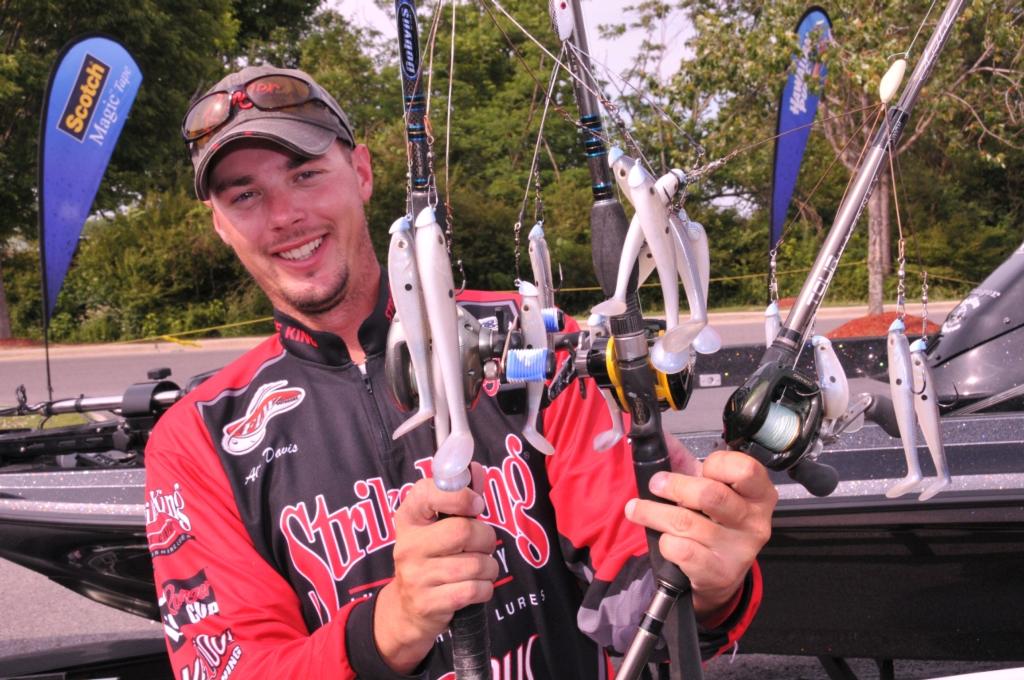
When it debuted in October 2011 during the FLW Tour event on Lake Guntersville, many believed that the Alabama rig would be the best thing since sliced bread. It went without question that if you weren’t throwing the A-rig you weren’t going to contend. This was evident when out of the top-10 anglers fishing on the final day only one man didn’t use an Alabama rig – Alex Davis.
Afterwards, a frenzy broke out with anglers spending their entire fall and winter learning the nuances of the rig. This was all so new. Where do you fish it? What rod do I need? Which hook do fish bite most? What depth works best? Anglers of all skills – especially tour-level pros – spent hours upon hours searching for the answers to these questions.
One angler that spent more than his fare share of time learning the rig was Davis, who quickly discovered its potential.
“I actually got an Alabama rig for the last day of that FLW Tour on Guntersville,” said Davis. “I was the only guy to make the cut that was doing the frog and flipping deal. At around 10 o’clock on the final day I picked it up and caught a fish on my very first cast.
“After weigh-in that day I stayed up till 2 a.m. making my own A-rigs. If a bait comes out that will beat you and it’s legal, you better learn to throw it. From that day until the following spring I spent over eight hours on the water per day just trying to learn as much as I could about that rig. I messed with wire length, bait size and weights of the main head and jigs; I just wanted to know everything about it.”
Like with any presentation, anglers soon realized that you needed to adapt the rig to the size of the fish and the type of lake. With the sheer number of anglers throwing the Alabama rig, it didn’t take long for new versions to surface.
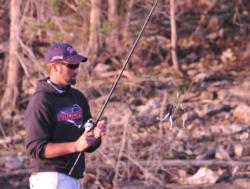 A modified umbrella rigged showed up early in the 2012 FLW Tour season and propelled Spencer Shuffield to a second-place finish on Table Rock. This new version of the rig not only utilized shorter wires and smaller baits, but also had tiny willow blades affixed to the wires. In just a matter of months the A-rig had gone from a giant blend of metal and lead to a compact version that could be fished in small, precise areas.
A modified umbrella rigged showed up early in the 2012 FLW Tour season and propelled Spencer Shuffield to a second-place finish on Table Rock. This new version of the rig not only utilized shorter wires and smaller baits, but also had tiny willow blades affixed to the wires. In just a matter of months the A-rig had gone from a giant blend of metal and lead to a compact version that could be fished in small, precise areas.
“The A-rig or umbrella rigs are one of the most versatile presentations I have ever seen,” continued Davis, who also guides on Guntersville. “There is just so much variation to the rig. You can downsize, upsize, run one blade per wire, two blades per wire, fish it deep, fish it shallow – the list just goes on. But I really believe that when Spencer (Shuffield) used that mini rig on Table Rock it really opened a lot of people’s eyes to what the rig could do in other situations.
“Alabama rigs are becoming more than just something you throw on TVA impoundments in the fall – that is just what people assume because of when Paul Elias won. It’s not a lure you can throw for 30 minutes and say the fish aren’t biting. Probably 80 percent of people do that, which is where they go wrong. If you have confidence in it and keep fishing it, eventually you will catch them.”
So why is it that the same names that usually sit perched atop the leaderboard are still up there even when they throw the rig? With the rest of the field fully capable of throwing the rig, still much of the same faces continue to dominate the sport.
Davis explains his thoughts on the matter.
“I think it just boils down to confidence. Guys like Andy Morgan and Jacob Powroznik have always done well and continue to do well because they have learned an Alabama rig is helpful to have in your boat when you know where to use it. They have confidence in the rig and that shows not just anybody can pick it up and start winning. It’s the same as Denny Brauer having confidence in a jig. He is going to throw that jig in times when most people think a fish won’t eat a jig, but he will still catch them on it because he is confident with it and knows the situations he can catch fish with it.”
There’s no doubt that Davis is one of the front runners in understanding the A-rig. He is known as The Spinnerbait Kid, which happens also to be the name of his guide service on Guntersville, though he hasn’t thrown one since the Alabama rig came out, potentially lending himself the new nickname of Alabama Rig Kid.
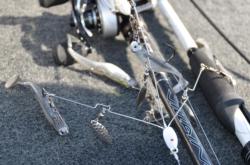 The fact of the matter is that the Alabama rig, A-rig or umbrella rig – whatever you want to call it – has evolved to more than just a bait to throw around in waters holding major shad populations. Around the country people are catching smallmouths, spotted bass and largemouths from a variety of lakes. Originally perceived to be a presentation that would only work around bridges on TVA impoundments, the last year has shown the versatility of the bait.
The fact of the matter is that the Alabama rig, A-rig or umbrella rig – whatever you want to call it – has evolved to more than just a bait to throw around in waters holding major shad populations. Around the country people are catching smallmouths, spotted bass and largemouths from a variety of lakes. Originally perceived to be a presentation that would only work around bridges on TVA impoundments, the last year has shown the versatility of the bait.
A prime example of this is when Davis won the 2012 EverStart Series event on Guntersville. The tournament took place in May which was considered by most to be a time when you needed to throw crankbaits, spoons or worms on ledges. Davis defied that logic and went to work with three different sized A-rigs (small, medium and large as he put it). He tallied up over 81 pounds of bass for three days of fishing, all came from ledges.
“The A-rig is one of those things you can catch fish all year long with, except during the spawn,” said the Albertville, Ala., native. “I messed with the rig a lot trying to figure out how to catch fish in the summer with it. It’s not a bait that will fire up a school, but it will clean house once you get them going.”
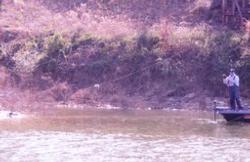 Along the way we have seen several tournaments not necessarily won on the rig, but used as a one-two-punch for anglers looking to fill their limit or find a kicker. In fact, the most recent tour event on Smith Lake showed how anglers like Koby Kreiger, Powroznik, Morgan and even Brent Ehrler utilized the rig in some form or another to get key bites from both spots and largemouths. That tournament demonstrated the diversity of where and how you can fish the bait, from Powroznik throwing over 50 feet of water to catch suspended spots, to Kreiger casting to wind-blown lay-downs on the bank.
Along the way we have seen several tournaments not necessarily won on the rig, but used as a one-two-punch for anglers looking to fill their limit or find a kicker. In fact, the most recent tour event on Smith Lake showed how anglers like Koby Kreiger, Powroznik, Morgan and even Brent Ehrler utilized the rig in some form or another to get key bites from both spots and largemouths. That tournament demonstrated the diversity of where and how you can fish the bait, from Powroznik throwing over 50 feet of water to catch suspended spots, to Kreiger casting to wind-blown lay-downs on the bank.
The rig has proven its effectiveness on smallies in the northern parts of the country and even produced big fish on Okeechobee – probably one of the last lakes you would think to throw it. Basically, the Alabama rig is branching out from the “mold” it started with.
Davis believes that the rig could continue to have an impact on the remaining FLW Tour events.
“With the different lakes on tour this year it will allow anglers to try and utilize it (Alabama rig) outside of the baits they are used to throwing. Beaver, Chickamauga and Grand are all lakes that have potential for the Alabama rig to produce. There are lots of guys that still doubt the rig even though they know it can catch fish. People still want to try and throw baits that normally work on a given lake and seem too stubborn to try the rig. It all comes back to having confidence in it and this tour schedule might help guys experiment more with A-rigs.”
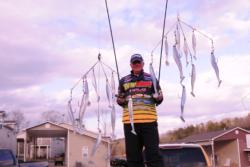 The Alabama rig phenomenon certainly isn’t going away anytime soon. New variations and varieties seem to appear every other week. As the addiction continues to grow, so will the endless combinations of wires, blades and baits. One thing remains certain, The Alabama Rig Kid will surely be in the driver’s seat.
The Alabama rig phenomenon certainly isn’t going away anytime soon. New variations and varieties seem to appear every other week. As the addiction continues to grow, so will the endless combinations of wires, blades and baits. One thing remains certain, The Alabama Rig Kid will surely be in the driver’s seat.
“The only way to get confidence with the bait is to throw it everywhere you go to really open your eyes to what it can do. It is one of the most physical ways to fish and has changed tournament fishing and the fishing industry in a good way. Catching bass on the Alabama rig is the best bite ever on a rod and reel. Nothing else compares to it.”